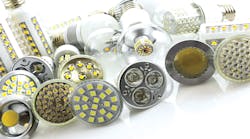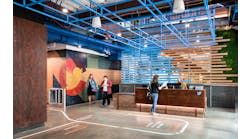Using lighting controls as a means to cut costs is not a new concept. There are plenty of options to save on energy costs by using occupancy sensors, manual switches and time sweeps.
Alongside building controls, the proliferation of LEDs has played a role in trimming energy budgets by offering an extremely efficient bulb that lasts longer than traditional systems. But according to adopters of a concept known as “human-centric lighting,” it may be time to turn the brightness down on glowing LEDs – not for the sake of cutting your energy spend, but for the health of building occupants. Human-centric lighting involves tuning LEDs to improve human health, wellbeing, productivity and performance.
Much like how temperature level preferences vary from occupant to occupant, people will also naturally prefer different light levels. Turning up the light or decreasing the brightness depends on the specific task and location, and both appliance makers and code regulators are taking notice. Several lighting companies have already started offering human-centric lighting products after discovering that high levels of light during the day can help regulate natural circadian rhythms. For instance, increased levels of natural light in hospitals can positively affect sleep patterns in patients. For office workers, using the full light spectrum via LEDs and lighting controls can actually mimic natural light, increasing productivity and focus.
On the regulatory front, the requirement to meet building codes and the desire to save money have long played a role in the way FMs brighten their facilities, but there is a shift going on in the industry. Companies are figuring out that the narrow focus on cutting spending with light controls and LEDs needs to quantify productivity losses due to lighting or perhaps increase human output from human-centric lighting.
Implementation of this strategy is limited to manufacturers now, but building codes could follow. The next time you plan a lighting retrofit project, consider how it not only saves you money on paper but how it will affect your occupants day to day.


